We determine the hierarchy of college basketball each season through the chaos of the NCAA tournament. But regional bragging rights matter, too.
A few weeks ago, we tracked the best jobs in college basketball.
The following is a list of the most challenging college basketball jobs by state. Don't be surprised if you see the most prestigious or popular program in your area on this list. We've considered success relative to expectations, fan fervor, salary, job security, facilities, tradition, institutional support, staying power and recent level of drama.

Alabama: UAB Blazers
In 2013, Plantersville, Alabama, native William Lee -- No. 64 in the 2014 class, per ESPN.com -- committed to Alabama-Birmingham over Alabama and Georgia. He led the Blazers in multiple categories last season (13.2 PPG, 6.7 RPG, 2.4 BPG). The recent growth of Alabama and Auburn -- both landed nationally ranked recruiting classes this season -- will complicate UAB's pursuit of in-state and regional stars in the future.
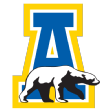
Alaska: Alaska-Fairbanks Nanooks
Well, Alaska lacks a Division I program. But Mick Durham must convince players to join a Division II squad that's just a 58-hour drive north of Los Angeles on Interstate 5 in a city where nearly 7 feet of snow had fallen in the first two months of winter this year.
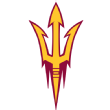
Arizona: Arizona State Sun Devils
To spark a program with two NCAA tournament appearances since 2003 and rise in the Pac-12, Bobby Hurley will need a pipeline of elite recruits to compete with the best teams in America. He faces a difficult task in a great city (Phoenix) because Arizona continues to woo the West Coast's best preps.

Arkansas: Arkansas-Little Rock Trojans
After Chris Beard led UALR to the second round of the NCAA tournament in 2016 -- a run that featured a win over Purdue in the opening round -- he discussed the love he'd hoped his team would receive in Little Rock when the players returned. Whatever newfound admiration they enjoyed didn't last long because the entire state belongs to the Arkansas Razorbacks. That's hard for every school in the area to overcome.
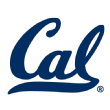
California: California Golden Bears
The Bears own a solid history in 21st century college basketball with five NCAA tournament appearances since 2009. The school sits in a fertile talent landscape in Oakland, but its lack of a practice facility in the Pac-12 inhibits the program's pursuit of the West Coast's best athletes. The school also boasts a diverse fan base with eclectic interests and options beyond attending a basketball game.

Colorado: Northern Colorado Bears
The Bears, a program that joined the Division I ranks in 2006, are still yearning for a repeat of their surprising run to the NCAA tournament in 2011, shortly after they joined the Big Sky and gained postseason eligibility. Raising expectations early puts more pressure on any rebuilding job. Just ask ....

Connecticut: UConn Huskies
Can UConn be the best and most challenging job in the state? Yes. With four national titles since 1999, the Huskies' fan base expects American Athletic Conference championships and lengthy runs in the NCAA tournament. Kevin Ollie knows as much. His 2014 national title run showed what's possible. The disappointments of recent seasons proved how quickly the temperature can change.

Delaware: Delaware State Hornets
The Hornets have won just 17 games in two years and averaged just over 1,200 fans per night in 2015-16 at an arena that holds more than 3,000. Head coach Keith Walker hopes to change that.
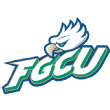
Florida: Florida Gulf Coast Eagles
The legend of Dunk City remains after the school's magical run to the NCAA tournament in 2013. The Eagles returned in 2016. Now, the next phase for the program continues: moving past the Dunk City narrative and showcasing everything this gem of a campus has to offer game-changing recruits.
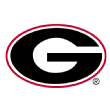
Georgia: Georgia Bulldogs
Mark Fox has caught an abundance of heat after two appearances but zero NCAA tournament wins during his tenure at Georgia. Now, his mission to boost his program demands he solve two obstacles: the regional impact of Georgia Tech's success in Josh Pastner's first season, and playing in a conference (SEC) that might make the greatest year-to-year improvement of any league in the country.

Hawaii: Hawaii Rainbow Warriors
It's the only Division I program on the island. Convincing competitive players from the mainland to play in Hawaii -- not just visit -- is still a problem for the squad.

Idaho: Idaho State Bengals
The arms race in college basketball is serious. Idaho State intends to keep pace with rival Idaho, which is preparing to build a new multimillion-dollar complex, but Idaho State has failed to find donors for a new $20 million arena that would solve logistical problems the program endures at aging Holt Arena.
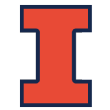
Illinois: Illinois Fighting Illini
Illinois fans often repeat tales of a Final Four run the program achieved more than a decade ago, but Illinois continues to fight through a variety of challenges Bruce Weber and John Groce could not overcome. Chicago is a rich and fruitful recruiting landscape that has become the Whole Foods of the national college basketball scene. Every team wants to grab players off the city's impressive shelf of talent. Chicago has been a tease for Illinois, which has produced one first-round pick in the past decade. Can Brad Underwood sign the city's and region's best?

Indiana: Butler Bulldogs
This isn't just the squad that put together two of the most memorable Final Four runs -- thanks to Gordon Hayward & Co. -- in recent history. Chris Holtman had assembled a top-30 recruiting class before he accepted the Ohio State job. Then, top-100 commitment Kyle Young decided to follow him to OSU. Butler can compete for those kids now, so LaVall Jordan steps into a gig where last season's Sweet 16 run surprised few. The bar is high.
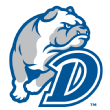
Iowa: Drake Bulldogs
Without an NCAA tournament appearance since 2008, Drake must find a way to enhance its dwindling fan base that barely filled half the Knapp Center (average attendance of 3,087 in 2015-16). The support at Iowa, Iowa State and Northern Iowa proves it's possible. A new practice facility should enhance recruiting for first-year coach Niko Medved, but he has a long road ahead.

Kansas: Kansas State Wildcats
The Wildcats have put together a solid stretch of postseason appearances in recent years. They've signed high-level recruits such as Michael Beasley and O.J. Mayo. And yet, they're still far behind King Kansas in Lawrence. That's not new, but the emergence of Wichita State, now in the American, reduces Bruce Weber's program to a perennial bronze medalist in the state.
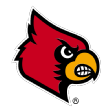
Kentucky: Louisville Cardinals
Well, this seems obvious. Rick Pitino still possesses one of the best jobs in college basketball if it's just about the money and fame. A lingering sex-for-pay scandal will cost him a five-game suspension and his 2013 national title banner if Louisville loses its appeal. The impact on the recruiting scene seems minimal thus far, but opposing coaches will use this situation in their pitches to the elite recruits Pitino will continue to chase. The future of the program and its national perception could be jeopardized.
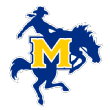
Louisiana: McNeese Cowboys
Per the Times-Picayune, McNeese State has increased its athletic budget nearly 60 percent over the past decade. Yet, its basketball program continues to linger near the bottom of the Southland standings after five consecutive sub-.500 seasons.
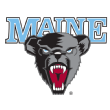
Maine: Maine Black Bears
The only Division I school in the state won just seven games last season. The location and 6 feet of annual snowfall in Orono, Maine, doesn't help its cause in recruiting.

Maryland: Towson Tigers
Pat Skerry's squads have finished 20-13 overall and 11-7 in conference play in back-to-back seasons. Those marks might have carried Towson to the NCAA tournament before George Mason, Georgia State, Old Dominion and VCU all left the league in a recent two-year stretch.
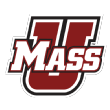
Massachusetts: UMass Minutemen
The school recently fired Derek Kellogg following consecutive sub-.500 seasons. Solving this quandary -- how do you lure great players from the East Coast to Amherst? -- is now former Chattanooga coach Matt McCall's challenge to tackle.
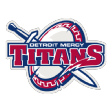
Michigan: Detroit Mercy Titans
The last time Detroit went to the NCAA tournament, Ray McCallum Jr. -- a second-round pick in the 2013 NBA draft and son of former coach Ray McCallum Sr. -- was guiding the team. Kam Chatman, a Michigan transfer and son of Detroit assistant Cannon Chatman, is eligible to play for Detroit this season. Luring players of that caliber consistently and without the help of their fathers is the next step for Bacari Alexander's program.

Minnesota: Minnesota Golden Gophers
It's the only Division I school in the state. Richard Pitino's program made great strides last season and will enter the 2017-18 campaign as a Big Ten championship contender. Now, he must maintain the mojo and fight to sign the young, top-100 talent blossoming throughout the state.
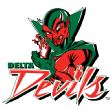
Mississippi: Mississippi Valley State Delta Devils
To keep its athletic department's budget afloat each year, Mississippi Valley State's basketball program -- like other low-major squads throughout the country -- must play lucrative "buy" games against Power 5 programs. The Delta Devils didn't play their first home game last season until Jan. 7 after starting the first two months on the road. That's hard on players and coaches.

Missouri: Saint Louis Billikens
Rick Majerus reignited Billikens basketball before his death. Then, Jim Crews helped the program maintain those winning ways, capped by a trio of NCAA tournament runs that ended in 2014. Saint Louis, now under Travis Ford, continues to search for the magic of Majerus.
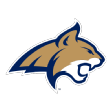
Montana: Montana State Bobcats
The Bobcats, a second-tier team in conference play in recent years, chase the same talent as rival Montana, a powerhouse in the Big Sky. With a fleet of returning players, the Bobcats hope to leap into the top half of the league and compete with their nemesis.

Nebraska: Nebraska Cornhuskers
Tim Miles led Nebraska to the NCAA tournament in 2014, the same year top prospects such as Jahlil Okafor visited campus. The Cornhuskers were movin' on up. Miles has not matched that success since. He has great facilities and a fan base waiting to embrace a winner, but the Huskers are a forgotten entity when they struggle, especially with the powerful Nebraska football brand dominating the campus 24/7.
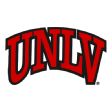
Nevada: UNLV Runnin' Rebels
Another entry from our best jobs in the state package. It's still the best job in the state. It's also a program that has failed to shake the stench after falling short of expectations for nearly 30 years following its national title run -- despite signing four- and five-star talent in recent years.

New Hampshire: Dartmouth Big Green
In the past 13 seasons, the school has had four coaches and never finished above .500.
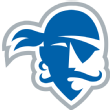
New Jersey: Seton Hall Pirates
See: St. John's. Great market for talent filled with competition and a league that has produced a national title and an Elite Eight run in recent years. Seton Hall is set, however, for perhaps its best season under Kevin Willard.
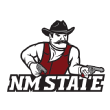
New Mexico: New Mexico State Aggies
New Mexico State beat rival New Mexico last season, won 28 games and reached the NCAA tournament, while the Lobos wrestled with a subpar season that cost former coach Craig Neal his job and a spending scandal that cost the athletic director his job. Then, New Mexico stole head coach Paul Weir from New Mexico State with a $400,000 annual raise. That's the difference in how the two schools are viewed across the state and the resources each possesses.

New York: St. John's Red Storm
The prep school circuit complicates the recruitment of the New York City hoops scene. The "play at home" concept is no longer a luxury St. John's enjoys. That's not the only reason Chris Mullin faces an uphill battle at St. John's. He's also playing in the Big East, the pound-for-pound titan in college basketball.

North Carolina: NC State Wolfpack
After he was drafted ninth by the Dallas Mavericks, Dennis Smith Jr. said he wanted to "learn exactly how to play defense." That sums up the recent experience of players at NC State, the Robert Kardashian of Tobacco Road. Between the administrative problems and some underperforming with top talent, NC State continues to fall short of the standard North Carolina and Duke match most years.

North Dakota: North Dakota Fighting Hawks
Much like South Dakota, North Dakota hopes to duplicate the success of its rich and powerful rival at North Dakota State, both recent additions to the Division I landscape. The school's first NCAA tournament appearance as a Division I program last season is a good step toward that aim.
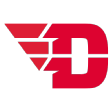
Ohio: Dayton Flyers
During his time at Dayton, Archie Miller expanded the winning culture of a program that's big-time in every way: facilities, fan support, resources and talent. Now, former Alabama coach Anthony Grant will attempt to extend the success with the Flyers, who hope to lure talent from the same regional pool Cincinnati, Xavier and Ohio State all explore.
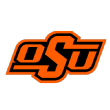
Oklahoma: Oklahoma State Cowboys
This feverish fan base welcomed future pros such as Jawun Evans and Marcus Smart in recent years. But if athletic director Mike Holder, who watched Brad Underwood leave for a $3 million-per-year deal at Illinois after an NCAA tournament run, won't offer a winning head coach the proper resources, then OSU could face a revolving door of leaders dissatisfied with Holder's approach.
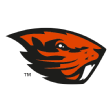
Oregon: Oregon State Beavers
In the past 27 years, Oregon State has reached the NCAA tournament twice. Both times a star guard named Gary Payton (father and son) led the Beavers to those postseason opportunities. Oregon State has failed to create the legacy that helps programs replenish their rosters each season. Wayne Tinkle has excellent facilities in a great league. Establishing a winning tradition, however, remains an imperative task.
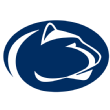
Pennsylvania: Penn State Nittany Lions
If you've ever been to State College, Pennsylvania, then you know it's a lengthy drive from Pittsburgh and Philadelphia and a disastrous drive whenever it snows. This doesn't stop four- and five-star studs from playing football for the Nittany Lions. This ain't football. There is an eerie stillness during basketball games at a half-empty Bryce Jordan Center that's difficult for any coach to use to his advantage.
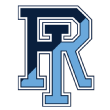
Rhode Island: Rhode Island Rams
The Rhode Island-Providence rivalry is one of the best -- and most underrated -- in college basketball. Both Danny Hurley and Ed Cooley have coached top-25 teams in recent seasons, but Rhode Island's struggles against its biggest rival persist. The Rams are 56-74 against Providence overall, and they've lost the past seven matchups. In a state that small, those marks matter.

South Carolina: Clemson Tigers
Three months ago, Clemson announced Brad Brownell would return for an eighth season after a lackluster 2016-17 campaign that ended with an NIT berth. The large shadow of the school's football powerhouse and the surge of in-state rival South Carolina, a Final Four team last season, won't exactly reduce the pressure on Brownell entering the 2017-18 season.
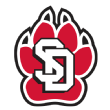
South Dakota: South Dakota Coyotes
The Coyotes play in the new $20 million Sanford Coyote Sports Center, which opened last season. Now, Craig Smith's program wants to equal the postseason success of rival South Dakota State, which has scored four trips to the NCAA tournament since 2012.

Tennessee: Memphis Tigers
Yes, we included Memphis on our best jobs list because it is the best job in the state. It's also the job that comes with the most pressure. One year and one mass exodus of talent into Tubby Smith's tenure and some of the program's supporters want him replaced. Smith is dealing with the same static that led to Pastner's departure: a fan base thirsting for a return to the thrills delivered by John Calipari.
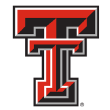
Texas: Texas Tech Red Raiders
It's a school with a strong fan base and good facilities, but Lubbock is nearly 350 miles from Dallas, 400 miles from San Antonio and more than 500 miles from Houston, the three biggest metro markets in the state. That's Chris Beard's most significant challenge.

Utah: Southern Utah Thunderbirds
Under new coach Todd Simon last season, Southern Utah won just six games for the second consecutive year. It's not easy to win in Cedar City, Utah.

Vermont: Vermont Catamounts
Vermont is the only Division I school in the state, a program with a respectable six NCAA tournament appearances since 2003. It has overcome many challenges. But how often do recruits ask John Becker to define "catamount" (a large wild cat) on visits?

Virginia: Virginia Military Institute Keydets
Athletes at VMI are expected to comply with the requirements all army cadets accept. So it's basketball and everything else that comes with those responsibilities. Not easy for any coach or player to navigate those duties.
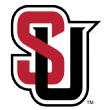
Washington: Seattle Redhawks
Seattle's recent return to Division I basketball hasn't gone well. The team plays in KeyArena, the former home of the Seattle Supersonics. The Redhawks averaged just under 2,000 fans per game in 2015-16.

West Virginia: Marshall Thundering Herd
Dan D'Antoni, the brother of Houston Rockets coach Mike D'Antoni, coaches Marshall for $200,000 per year in Huntington, West Virginia. It's not a horrible job, and Conference USA's top tier boasts a collection of respectable teams that have pulled off NCAA tournament upsets in recent years. But it's a difficult job, as evidenced by the team's failure to reach the NCAA tournament since 1987, a drought Miami Heat star Hassan Whiteside couldn't snap in his time at the school.

Wisconsin: UW-Milwaukee Panthers
Three years ago, academic challenges led to a postseason ban that impacted the program's reputation and profile. Two years ago, polarizing athletic director Amanda Braun barred former coach Rob Jeter's program from accepting a trip to a postseason tournament before she fired him. The administrative problems at this school -- along with budget challenges -- make this the state's most challenging gig. And it's not close.
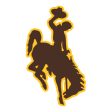
Wyoming: Wyoming Cowboys
Allen Edwards makes $500,000 per year at Wyoming, the state's only Division I program. His challenge? Convincing players that Laramie, Wyoming -- population of 30,000-plus -- is a fun place to play.
